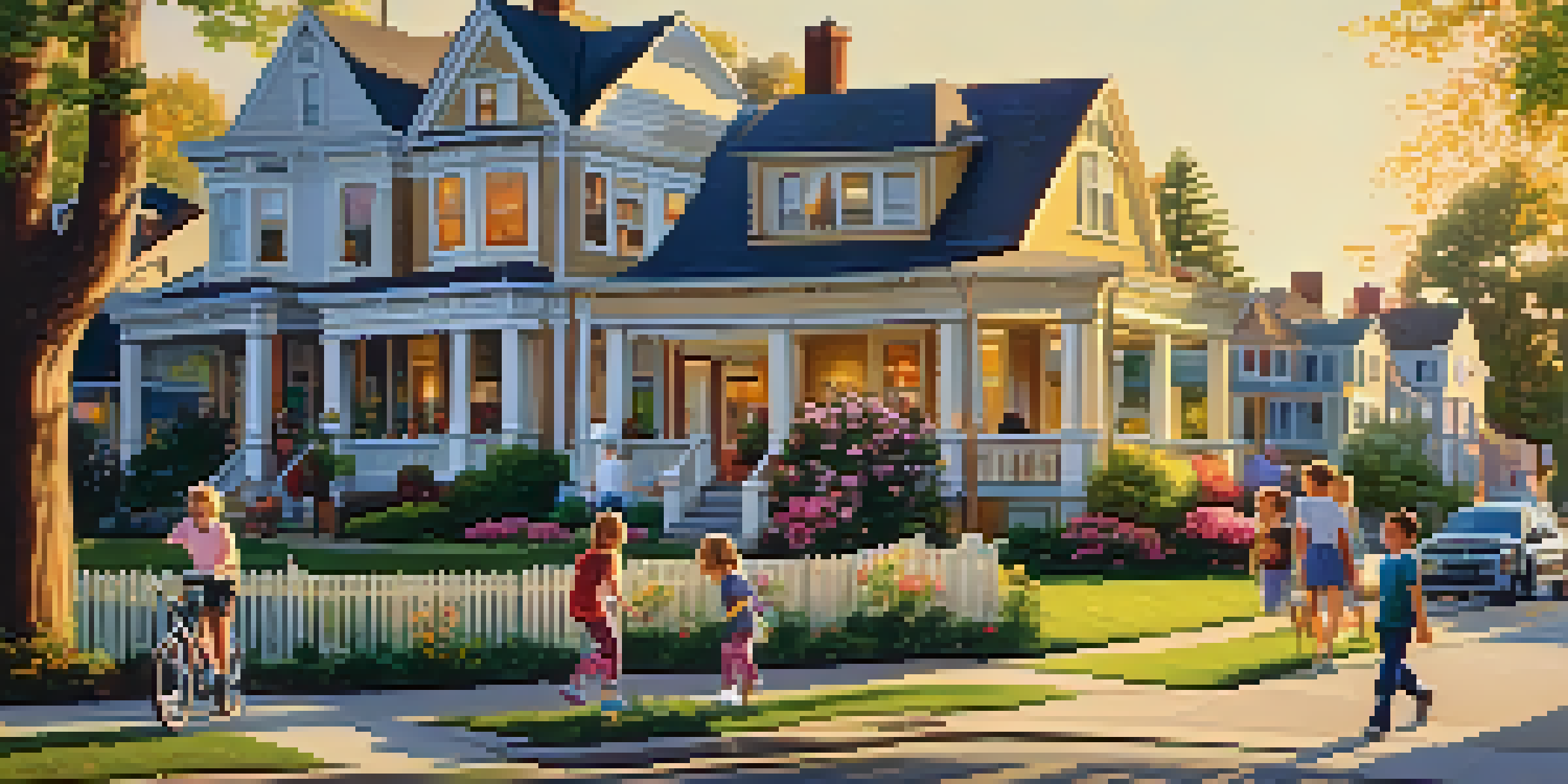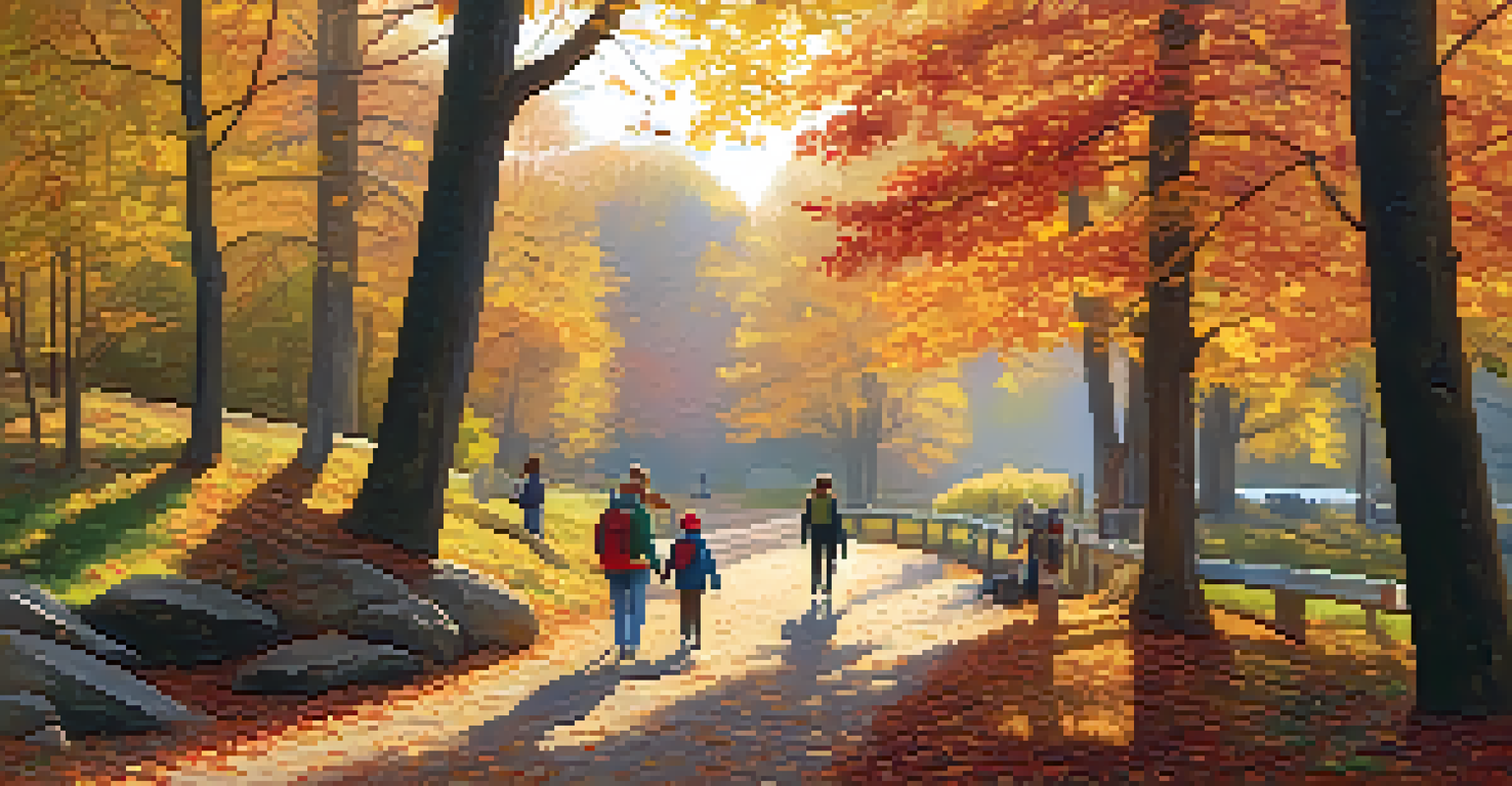Cultural Shifts: NYC Residents Adapting to Suburban Life

The Great Migration: NYC to Suburban Areas
Over the past few years, a notable trend has emerged: New Yorkers are packing their bags and heading for the suburbs. The pandemic accelerated this shift, as many sought more space and a quieter lifestyle away from the city's hustle and bustle. This migration isn't just about finding a house; it's about redefining what 'home' means in a post-pandemic world.
Home is not a place, it's a feeling.
As families move into suburban neighborhoods, they bring with them a distinct urban culture. This includes a love for diverse food, arts, and community engagement that often transforms the local landscape. It’s fascinating to see how these newcomers adapt their city habits to their new surroundings, creating a blend of cultures that enriches suburban life.
For some, this transition feels like a rebirth, while for others, it may come with challenges. The key lies in balancing the fast-paced urban lifestyle they left behind with the slower, more community-oriented rhythm of suburban living. This cultural exchange is reshaping both the residents and the neighborhoods they now call home.
Adjusting to the Pace of Suburban Life
One of the most significant changes for former city dwellers is adjusting to a slower pace of life. In New York City, life moves at lightning speed, with daily commutes and crowded subways. In contrast, suburban life often means quieter streets, more time at home, and a greater focus on family and community.

This newfound pace can be liberating yet challenging. Many residents find joy in leisurely walks around their neighborhoods, discovering parks, and engaging in local events. However, some may struggle with feelings of isolation or boredom as they adapt to a different rhythm, especially if they are used to the constant buzz of city life.
NYC Residents Embrace Suburban Life
Many New Yorkers are moving to the suburbs for more space and a quieter lifestyle, reshaping the cultural landscape.
Finding a balance is crucial. Residents often seek ways to integrate their urban habits—such as frequent dining out and attending events—into their new suburban lifestyle. This adaptation can lead to a richer community experience, making the suburbs feel more like an extension of their previous lives.
Culinary Transitions: From Food Trucks to Family Meals
Food is a vital part of culture, and NYC residents are bringing their culinary preferences with them into suburban life. They often miss the convenience of food trucks and diverse restaurants, which sparks a desire to recreate those experiences at home. This has led to a surge in home cooking and backyard gatherings, as families explore new recipes together.
The greatest discovery of my generation is that a human being can alter his life by altering his attitudes.
Many newcomers are also keen on supporting local businesses, seeking out farmers' markets and unique eateries that remind them of their city roots. This not only helps them feel more at home but also fosters a sense of community, as they share their favorite dishes and culinary traditions with neighbors.
Social media plays a significant role in this culinary transition, with residents sharing their cooking adventures and discovering local gems. As they adapt to suburban life, these culinary explorations become a bridge connecting their past and present, enriching their new community with flavors of the city.
The Role of Community and Connection
Community is at the heart of suburban life, and NYC transplants are eager to build connections in their new surroundings. This desire for community often manifests in neighborhood gatherings, school events, and local volunteer opportunities. These interactions help forge friendships and provide a sense of belonging that may have been missing in the fast-paced city life.
Many former city residents bring a unique perspective to suburban living, often emphasizing inclusivity and diversity. They advocate for community events that celebrate different cultures, ultimately enriching the suburban experience for everyone. The blend of urban energy and suburban warmth creates a vibrant community dynamic.
Community Connections Thrive
Former city dwellers are eager to build connections in their new neighborhoods, fostering inclusivity and vibrant community dynamics.
However, establishing these connections can take time. Many residents find themselves navigating the nuances of suburban social life, where building relationships may be slower than in the city. Yet, the effort is well worth it, as these bonds often lead to lasting friendships and a deeper sense of home.
Education and Family Life in the Suburbs
For many NYC families, the move to the suburbs is largely driven by the pursuit of better educational opportunities for their children. Suburban schools often provide smaller class sizes and more resources, which are attractive to parents seeking a nurturing environment for their kids. This shift in focus can significantly impact family dynamics.
With new schools come new activities, from sports leagues to arts programs, allowing children to explore their interests in a way that may not have been possible in the city. This encourages families to engage more in community life, as they attend school events, support local teams, and participate in after-school programs together.
However, adjusting to a different educational system can also present challenges. Parents must navigate new school policies and social dynamics, which can feel overwhelming at first. Yet, as they immerse themselves in their children's school activities, they often discover a supportive community that helps them feel more at home in their new environment.
Embracing Nature: A Newfound Appreciation
One of the most refreshing aspects of suburban life for former city dwellers is the access to nature. Many find joy in the lush green spaces, parks, and trails that suburban living offers. This newfound appreciation for the outdoors often leads to family hikes, picnics, and weekend adventures that were less accessible in the urban jungle.
This connection to nature can also have profound effects on mental well-being. Studies show that spending time outdoors reduces stress and improves mood—something many city residents craved during their hectic lives. The slower pace of suburban life allows for more time spent in nature, contributing to a healthier lifestyle.
Nature Appreciation Grows
Access to green spaces in the suburbs enhances mental well-being and encourages families to engage in outdoor activities.
As families embrace this change, they often become advocates for local conservation efforts, bringing their urban passion for sustainability into their new communities. This shift not only enriches their own lives but also fosters a sense of responsibility toward preserving the natural beauty around them.
The Future of Suburban Living for NYC Transplants
Looking ahead, it's clear that the cultural shifts NYC residents are making in the suburbs will continue to evolve. As more people embrace this lifestyle, we can expect to see ongoing changes in community dynamics, local businesses, and even housing trends. The blending of urban and suburban cultures promises to create vibrant, diverse neighborhoods.
Future developments may include more urban-style amenities in suburban areas, such as co-working spaces, eclectic restaurants, and cultural events. This growth reflects the desires of former city dwellers who seek to maintain their city habits while enjoying the benefits of suburban life. It's a fascinating transformation that speaks to the adaptability of communities.

Ultimately, these cultural shifts represent not just a change in location but a broader rethinking of lifestyle. As NYC transplants continue to carve out their place in the suburbs, they embody a spirit of resilience and adaptability, shaping the future of suburban living for generations to come.